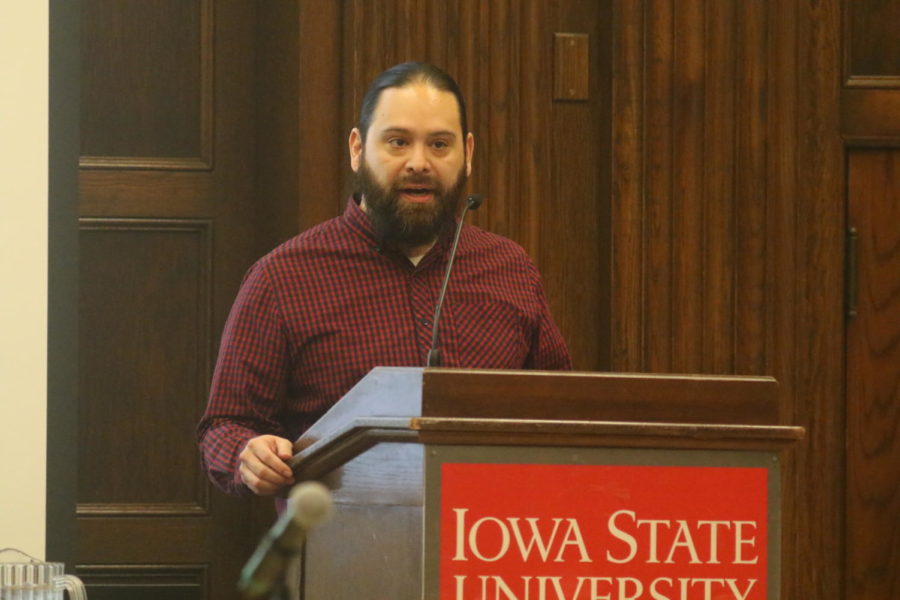Chicano movement lecture: Struggles for immigrant rights in San Diego
Chris Jorgensen/Iowa State Daily
Jimmy Patino, assistant professor of Chicano & Latino Studies at the University of Minnesota, lectures about Chicano activism in immigration on Monday night in the Memorial Union.
February 11, 2019
Jimmy Patino, an associate professor of Chicano and Latino studies at the University of Minnesota, spoke to Iowa State students Monday about the Chicano movement of the 1960s and how the lessons learned then are applicable today.
Patino’s work has surrounded seeking the voice of those who he said are most affected by immigration.
“When children die in the hands of border security, that kind of violence unfortunately is not a rupture from the past,” Patino said. “It’s not the emergence of something gone wrong. It’s a continuity of how this system has tended to function from its inception.”
Patino’s lecture included what he described as “refusals.” Refusals are stories of those who emerged as activists during the Chicano movement of the late 1960s to the mid 1980s.
“Rather than highlight leaders, I’m going to highlight the everyday people who rose from the movement,” Patino said.
The first refusal highlighted the story of Martha Elaina. Martha was with friends in San Diego one night when an officer discovered she was undocumented. The officer sexually harassed Martha Elaina and tried to get her alone, but her friends refused to leave her side.
The women told the police officer, “All three of us will leave, or all three of us will go.”
Eventually all three women crossed back to the Mexican border together.
The second refusal that Patino told was of C.A.S.A. Justica. The Center for Autonomous Social Action helped those undocumented groups to keep families together, reunited split families and support undocumented groups.
Within Patino’s research for his book, he met with members of C.A.S.A. One story he was told about this organization was of an immigrant whose green card was being taken away because he was accused of looking homosexual.
“Up until the 1990s, being homosexual would have been a reason to keep you from gaining citizenship,” Patino said.
The third refusal Patino told was of a mother whose son was struggling with a heart condition. The boy began coughing up blood and his mother took him to the border trying to get him medical attention.
“She waited in the line for a long time,” Patino said. “Becoming desperate she went to the front of the line. Despite her pleas, she was sent back to the end of the line. Moments later, it was described that she let out a blood-curdling scream. Her son had passed away. The next time his body was brought across the border, it was in a coffin.”
A common theme in Patino’s lecture was the importance of learning from the past.
“We need to consider the policy of implications of immigration policies,” Patino said. “The people at the border decide who stays and who goes, and sometimes, who lives and who dies.”







